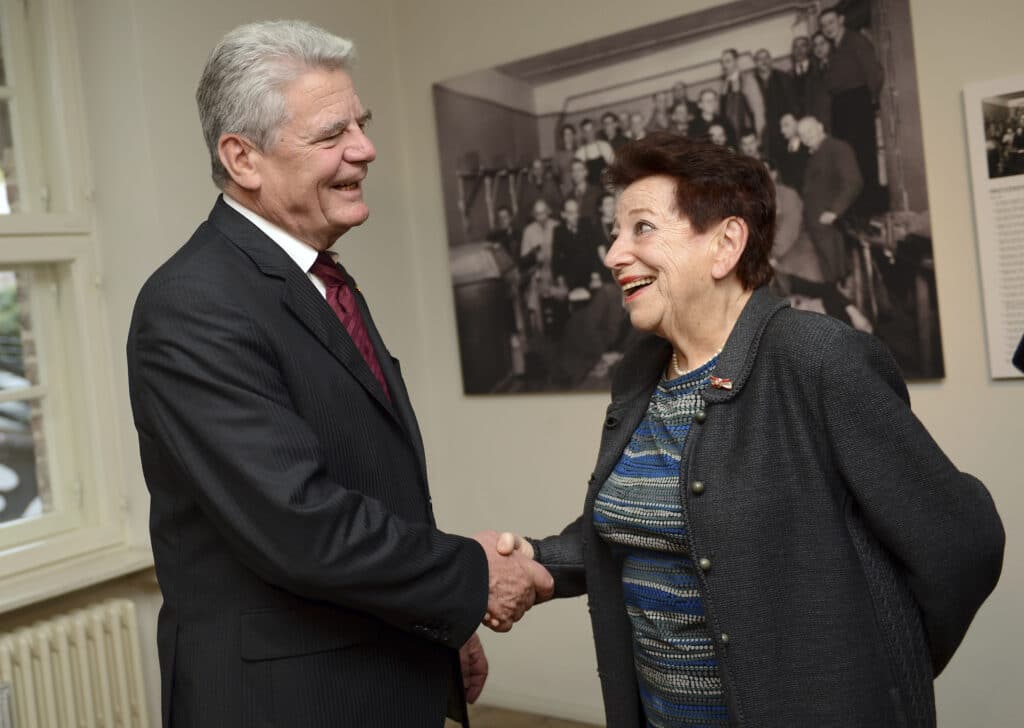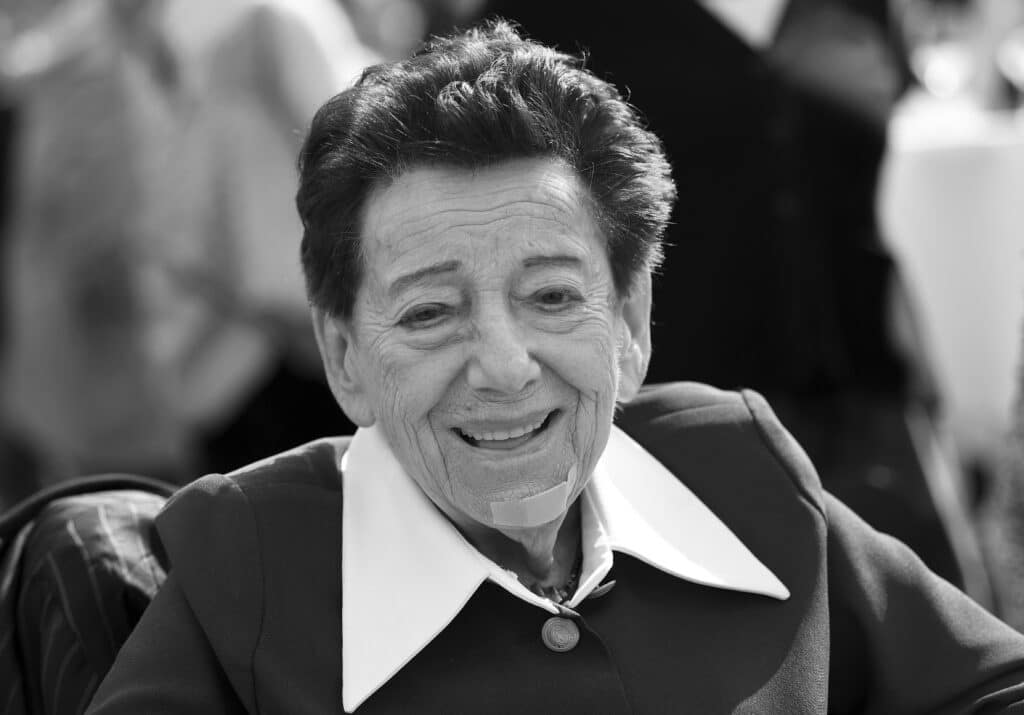Inge Deutschkron a Holocaust survivor who hid in Berlin during World War II, died Wednesday in her hometown in Germany, her foundation said in a statement and no cause of death was given. Deutschkron became known to a wider audience when she published her autobiography “I Wore the Yellow Star” about her dramatic survival story as a Jew in Berlin. As reported by the AP:
Deutschkron was born in 1922, in Finsterwalde, a town about 100 kilometers (60 miles) south of Berlin, she moved to the German capital when she was 5
BERLIN (AP) — Inge Deutschkron, a Holocaust survivor who hid in Berlin during the Third Reich to escape deportation to Nazi death camps and later wrote an autobiography, has died. She was 99.

Deutschkron died Wednesday in Berlin, her foundation said in a statement. No cause of death was given.
“A long life of fighting for justice and against anti-Semitic and right-wing tendencies in our society has come to an end,” the Inge Deutschkron Foundation said in a written statement. “We are losing a combative friend.”
Deutschkron became known to a wider audience when she published her autobiography “I Wore the Yellow Star” about her dramatic survival story as a Jew in Berlin. She also visited countless schools into old age to tell the younger generation about the horrors she experienced under the Nazis.
“With Inge Deutschkron, we have lost an important Jewish contemporary witness of the National Socialist Holocaust terror in our city,” said the president of Berlin’s House of Representatives, Dennis Buchner.
He added that Deutschkron “brought the strength to tell her story and to shake us awake with it.”
Deutschkron was born in 1922, in Finsterwalde, a town about 100 kilometers (60 miles) south of Berlin. She moved to the German capital when she was 5.
When it became increasingly difficult for Jews to get work after the Nazis came to power in 1933, Inge found employment in Otto Weidt’s brush workshop for the blind in 1941, using forged papers.
Weidt supported mainly deaf and blind workers, many of whom were Jews, and it was with the help of Weidt that Deutschkron managed to evade deportation. From January 1943, Inge lived illegally in Berlin and its surrounding area, and hid with her mother in order to survive.

They had to move from hiding place to hiding place to escape the Nazis — including a former goat shed and a boathouse on the Havel river, according to Germany news agency dpa.
At one of her hiding places, she watched from her window as other Jews were taken out of their homes by Nazi secret police and forced to climb onto wagons.
“That was terrible. The feeling of guilt never leaves you. It makes you think, ‘how could you let the others go and you tried to hide,'” she later remembered.
After years on the run and in hiding, the Deutschkron collapsed at the end of the war.
“I could no longer rejoice,” Deutschkron wrote in her autobiography. “We cried for days.”
After the war, Deutschkron first moved to London and later to Tel Aviv where she worked for daily newspaper Maariv. She returned to Berlin in 2001 where she lived until her death.
No details on funeral arrangements or survivors were immediately available.
By KIRSTEN GRIESHABER






